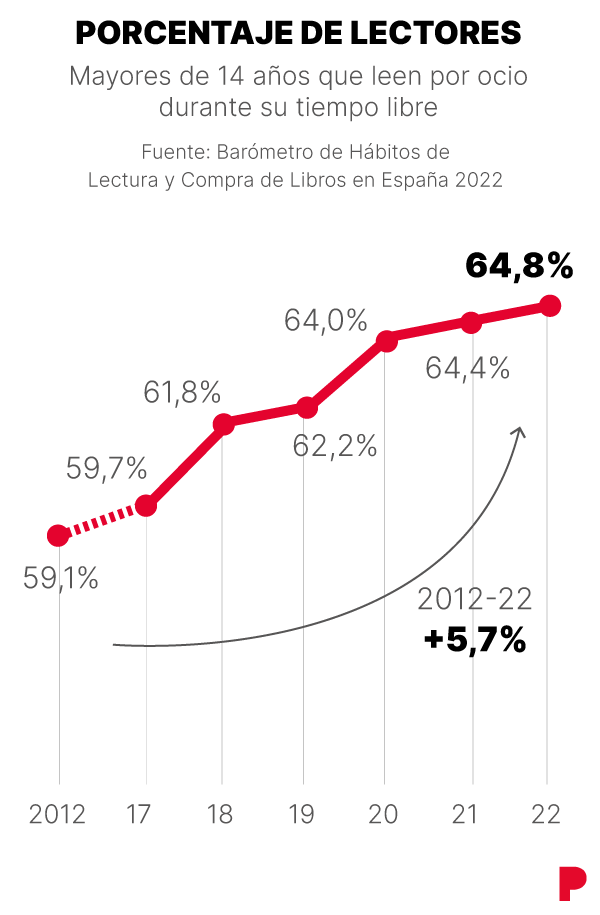The reading continues to rise in Spain after the pandemic “boom”.

Without exaggeration, but the good news about reading books in Spain continues. Not only has the strong increase in the reading habit seen during the first year of the pandemic been consolidated, but it has continued a small upward momentum. Leisure readership jumped from 62.2% to 64% from 2019 to 2020, Close restrictions through. The rate increased to 64.4% in 2021 and reached 64.8% in 2022, the cycle to which the measure of reading habits and book purchases presented by the Federation of Publishers Guilds of Spain (FGEE) corresponds on Monday. In a decade, since 2012, the index has grown 5.7 points, from 59.1% to the aforementioned 64.8% (52.5% readers daily or weekly and 12.3% readers monthly or quarterly).
The negative opposite is that 35.2% of Spaniards have never or never read books. It is just over a third of the population. In 2012, 40.9% of those who had not read a book or had not taken a photocopy of it were 40.9%.
“Little by little, the overall reading figures in Spain are getting closer to the European averages,” he said. Daniel Fernandez, President, FGEE-. It is a fact that there are age groups and geographic areas that are completely comparable to the countries around us.”
Noticeable differences
The barometer detects notable differences between autonomous communities. Madrid, with 74.2% of the population reading for leisure, tops the ranking. Catalonia (68.7%), Navarra and the Basque Country (68.2%), La Rioja (66.7%) and Aragon (65%) are also above the Spanish average. The autonomous regions with fewer readers are Castilla-La Mancha (59.6%), Canary Islands (59.1%) and Extremadura (55.1%).

Women are significantly more readers than men: 69.9% vs. 59.5%. This ten-point spread is the same as it was a decade ago. traditional.
The abyss that characterized studies has not changed. There is a 47.5 point difference between the percentage of university students who read (86.5%) and those with more than one primary education (39%). In 2012 the super move was 47.8 points (82.1% vs. 34.3%). Another classic, this one is directly related to economic inequality.

“We must continue to make efforts to reduce – as Fernandez claimed – the scale reflected imbalances. For several years, the European Federation of Accountants has advocated A social charter for books and reading It is not just limited to political parties but also to society as a whole. We have to believe that societies that read more are those that have better economic and democratic health, because books contribute to a more critical society.”
Libraries vs. the Internet
The report reflects that The age group with the largest number of readers is the age group between 14 and 24 years old (74.2%), followed by 45 to 64 (69.2%). The rate is 65.1% between 25 and 44 years old and 51.9% from 65 years old.
The traditional bookstore is the main purchasing channel of non-text books (69.9%), followed by the Internet (44%) and bookstore chains (33.3%). The Internet is the preferred shopping channel for young people between the ages of 25 and 30. 52.8% of the population bought at least one book in 2022, up 12.5 points from a decade ago.
Related news
Digital reading remains stable, with 29.5% of the population aged 14 and over reading books in digital format. Regarding audiobooks, in 2022 the number of their users has leveled off and 5.4% of the population listens to audiobooks at least once per quarter.
26.2% of Spaniards visited the library. Although it increased by one point from 2021, it is still far from the 32% it was in 2019, the year before the pandemic.





